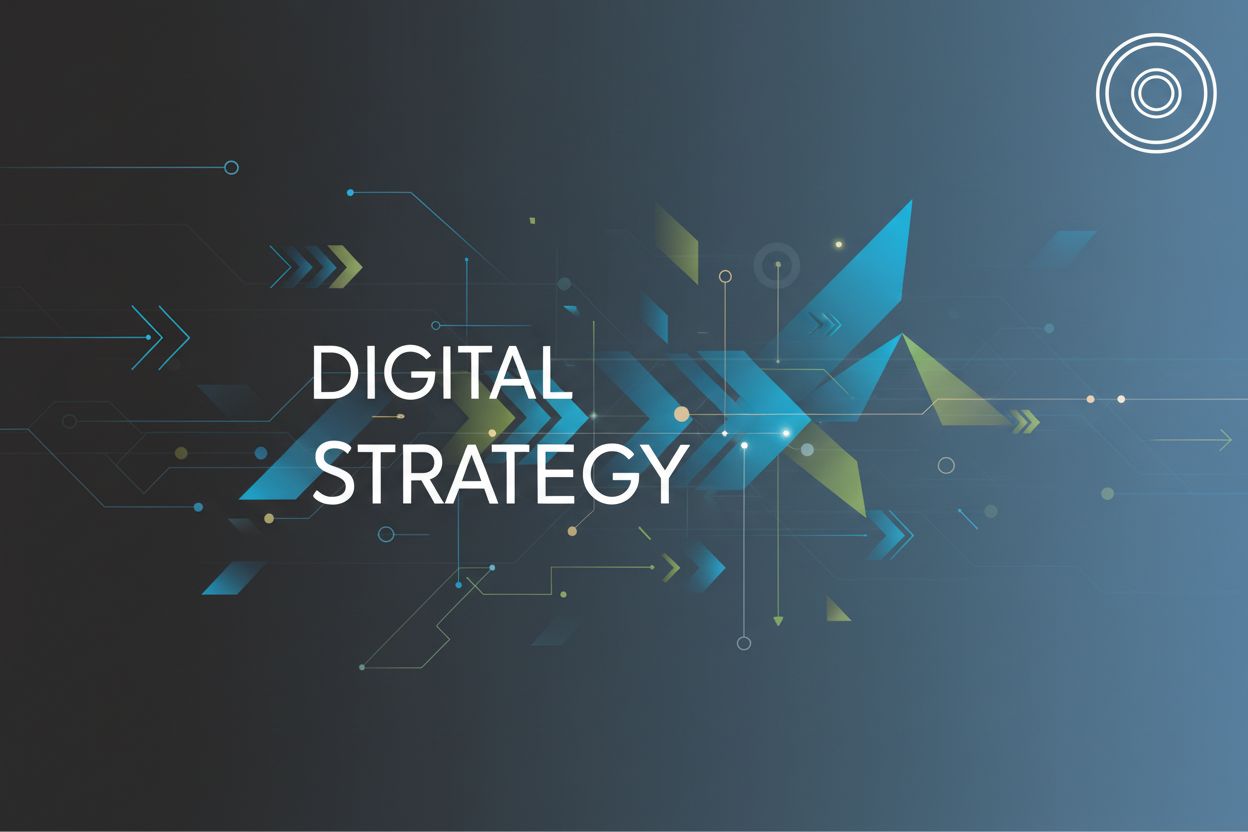How Pay-Per-Call Marketing Works for Advertisers Today
TL;DR
Understanding the Pay-Per-Call Model
Alright, so you're probably wondering what's the deal with pay-per-call marketing. Is it some old-school tactic that's been resurrected? Or is it actually something new and useful? Well, it turns out that it's pretty darn relevant, even today.
Pay-per-call marketing is a performance-based advertising model. Basically, advertisers only pay when they receive a qualified inbound phone call. Think of it like this: instead of paying for clicks or impressions that might not lead anywhere, you're paying for actual leads that have shown enough interest to pick up the phone.
Advertisers are paying for these qualified inbound phone calls, which are the lifeblood of the whole operation. It's not just any call, though, it's gotta meet certain criteria.
What Makes a Call "Qualified"?
A qualified call is one that meets specific, pre-defined criteria set by the advertiser. This ensures that the advertiser is only paying for leads that have a genuine potential to become customers. Here are some common criteria:- Call Duration: A minimum call length is often set. For example, a call must last at least 60 seconds to be considered qualified. This filters out very brief calls that might be accidental or from telemarketers.
- Caller Intent: The caller must express a clear intent to inquire about a product or service. For instance, a caller asking "What are your prices for X?" or "I'm interested in scheduling a consultation for Y" demonstrates intent. A caller asking for directions or the business's hours might not be considered qualified.
- Specific Information Exchanged: The call might need to include the exchange of certain information. For example, in a lead generation campaign for insurance, the caller might need to provide their zip code or confirm they are looking for a new policy.
- Geographic Location: Calls might only be considered qualified if they come from a specific geographic area relevant to the advertiser's service.
- No Transfers: Calls that are transferred to another department or external number might not be qualified, depending on the advertiser's goals.
Publishers, affiliates, and networks play a huge role in generating these calls. They're the ones running ads, creating content, and generally making sure the phone keeps ringing. As Trackier explains, pay-per-call is all about driving online leads and calls in the most efficient way.
Compared to other marketing models like pay-per-click (ppc) or pay-per-impression, pay-per-call is really focused on that high-intent action: a phone call. You aren't charged for dud clicks or fleeting impressions that never convert.
So, how does a pay-per-call campaign actually work? Well, it's all about setting up the campaign, tracking those calls, and then, of course, getting paid.
First, you set up your campaign. This involves defining what a "qualified" call looks like. Is it a certain duration? Does it need to come from a specific demographic? Maybe you're only interested in calls from folks looking for financial services.
Call tracking software is essential, and it uses unique tracking numbers. This is how you know where the call is coming from and whether it meets your criteria. Without that tracking, you're flying blind.
Calls are then routed to advertisers, and sometimes ivr systems are used. This is like an automated phone menu that helps filter calls even further before they reach a human. IVR systems can ask callers to select an option related to their specific need (e.g., 'Press 1 for new insurance quotes'), which helps pre-qualify them before they reach a sales representative.
You might be thinking, "Who even makes phone calls anymore?" Well, it turns out, people still do! And those calls can be super valuable.
Phone calls are still a really important part of the customer journey. People like to talk to people, especially when they're making big decisions.
There are some interesting stats about inbound calls and smartphone usage. Studies show that around 60% of consumers prefer calling a business over other contact methods when they have a specific question or need to make a purchase. Inbound calls driven by mobile searches are also up by over 15% year-over-year in many industries.
Direct conversations and human connection are something that digital interactions can't always replicate. Sometimes, you just need to talk to a real person.
As CallAtlas.io points out, phone calls convert 10-15x better than clicks. That's a pretty compelling reason to consider pay-per-call.
Now that you have the general gist of pay-per-call, next up, we'll dive into what makes a call "qualified" and why that's so important for maximizing your ROI.
Benefits of Pay-Per-Call for Advertisers
Pay-per-call marketing is a powerful way to connect with potential customers. It's like the difference between sending a letter and having a face-to-face chat – the latter just hits differently, right?
The big win here is quality. Phone calls tend to attract folks who are serious and ready to buy, not just browsing.
- These calls often lead to higher conversion rates compared to other lead-generation methods. I mean, think about it – someone who takes the time to call is way more engaged than someone who just clicks an ad.
- The immediate action and direct engagement are key. You're not waiting for an email response; you're talking in real time, answering questions, and building trust.
Paying for qualified calls ensures you're investing in tangible interactions. It's not about vanity metrics; it's about real conversations.
- This approach helps reduce wasted ad spend and potential click fraud. You're not paying for bots or accidental clicks; you're paying for genuine interest.
- The long-term value of call-based leads is huge. These leads often result in faster conversions, higher spending, and better retention. Plus, you're building relationships that can last.
Phone calls provide valuable insights into customer needs and preferences through direct conversations. It's like getting a free focus group with every call.
- Pay-per-call can reach consumers who are in the top or middle of the marketing funnel. These are people who may not have a specific brand in mind but are actively searching for solutions.
- This model allows you to maximize brand reach and target profitable services. You can focus on the areas where you see the most potential for growth and tailor your approach accordingly.
As Ringba points out, Pay Per Call shifts the cost of acquisition risk from the advertiser to the Pay Per Call. It's a shared risk, shared reward kinda deal.
So, what's next? Let's dig into how pay-per-call can improve customer insights and brand reach, because that's where things get really interesting.
Key Strategies for Successful Pay-Per-Call Campaigns
Okay, so you wanna make your pay-per-call campaigns really sing, huh? It's not just about throwing up some ads and hoping the phone rings—it's about strategy, tweaking, and knowing what makes people actually pick up that phone.
Think of it like this: you wouldn't wear the same outfit every day, would you? Your ads shouldn't be the same either! The idea here is to test, test, and test some more. Try different ad creatives, different wording, different images... see what really grabs people.
- Maybe you're advertising for a local plumber. Do ads showing a flooded basement work better than ones showing a happy family with sparkling clean pipes? Gotta test it!
- Or, if you're in the financial services biz, does a serious, professional tone pull in more calls than a friendly, "we're here to help" vibe? You won’t know until you try both.
- Don't forget to tweak your call-to-action (cta) too. "Call Now for a Free Quote" might kill it, but "Get Help in 60 Seconds" might work even better.
The key is to use the data you gather to fine-tune your campaigns. What's working? Do more of that. What's flopping? Ditch it! It's a constant process, but it's how you get those calls rolling in.
Okay, so, everyone's on social media these days, right? And video is king. So, why not use that to your advantage?
- YouTube is fantastic for targeting specific groups with video content. If you're selling high-end skincare, you can target beauty gurus and skincare enthusiasts. Then, bam! Video ad with a number to call for a consultation.
- Facebook ads also let you get seriously specific with who you're targeting. Plus, they got that handy click-to-call feature. So, someone sees your ad, likes what they see, and boom, they can call you right then and there.
- And don't forget about retargeting. You know, those ads that follow you around after you visit a website? Use 'em! Someone checks out your website but doesn't call? Hit 'em with a retargeting ad that says, "Still Thinking About It? Call Us Now!"
Ever had too much of a good thing? Yeah, even with pay-per-call, you can get overwhelmed. And your buyers (the folks you're sending the calls to) can definitely get overwhelmed.
- Call capping is all about setting limits. You don't want to send so many calls to your buyers that they can't handle them, or that they go over their budget. It's about keeping things manageable and making sure everyone's happy. Let's say you have a deal with a local law firm to send them up to 50 qualified calls a week. Set that cap!
- Weighted call routing is another cool trick. Imagine you have multiple buyers for the same type of lead. Maybe you have three different insurance agencies that all want car insurance leads. Weighted call routing lets you decide how to distribute those leads. Weighted call routing might mean sending 60% of leads to Buyer A because they have a higher conversion rate, 30% to Buyer B, and 10% to Buyer C.
It's all about optimizing resource utilization, improving the customer experience, and making sure everyone gets a fair share.
With these strategies in your pocket, you're well on your way to running some killer pay-per-call campaigns. But, remember, it's all about testing, tweaking, and staying on top of your data. Keep at it, and those phones will be ringing off the hook. We'll cover how to implement and manage these campaigns next.
Implementing and Managing Pay-Per-Call Campaigns
Okay, so you've got this pay-per-call thing figured out, but how do you actually make it happen? It's not just about knowing the theory, it's about getting your hands dirty and managing those campaigns. Let's dive right in, shall we?
First things first, you gotta pick a partner. Are you gonna wrangle affiliates yourself, or cozy up with a pay-per-call network? Honestly, both have pros and cons.
- Going solo gives you more control – you call the shots, you set the rules. But, man, it is work. You're managing relationships, tracking performance, and making sure everyone's playing nice.
- Networks, on the other hand, they handle a lot of the heavy lifting. Think of them as the "Trackier" of the pay-per-call world, as previously mentioned. They've got the infrastructure, the connections, and (hopefully) the experience to make things run smoothly. You'll want to make sure the network has a good rep, though.
Alright, you got your partner. Now it's time to set up shop. How are you gonna handle these calls?
- Are you sending them to a call center? To individual stores? Maybe a mix of both? There's no right answer, just what works for you.
- Budget time! How much you willing to spend? How much are you gonna bid per call? And what counts as a "billable" duration? This is where you get down to brass tacks.
- What's your goal here? More leads? More sales? Figure out what success looks like, and how you're gonna measure it. Some key ways to measure success include:
- Conversion Rate from Calls: What percentage of calls result in a sale or desired action?
- Average Order Value (AOV) of Call-Generated Customers: How much do customers who call spend on average?
- Customer Lifetime Value (CLV) of Call-Generated Customers: What is the total revenue a customer acquired through a call is expected to generate over their relationship with the business?
- Cost Per Qualified Lead (CPQL): How much does it cost to acquire one qualified lead via a phone call?
- Customer Acquisition Cost (CAC): What is the total cost of acquiring a new customer through pay-per-call?
- And hey, what kinda calls aren't you okay with? No outbound transfers? Gotta lay down the law.
Don't forget about IVR menus! "Press 1 for sales, press 2 for support..." it's a classic for a reason. It's a call filter.
This ain't a "set it and forget it" kinda thing, you know? You gotta be on top of it.
- Keep an eye on your call sources. Which ones are actually converting? Which ones are... less than stellar? Don't be afraid to cut bait.
- Are your calls legit? No funny business? Gotta watch out for fraud, channel restrictions, all that jazz.
- Talk to your partner—a LOT. Give them feedback, hear their suggestions, make it a conversation. As Soleo.com mentions, consistent communication is crucial.
- Dive into those reports! Listen to those recordings! What's working? What's not? Use that data to tweak, refine, and optimize. Crucial reports and data points to focus on include:
- Call Duration Reports: Understand how long calls are lasting.
- Conversion Rate by Source: See which channels or campaigns are driving the most successful calls.
- Cost Per Qualified Lead (CPQL): Track your efficiency in acquiring qualified leads.
- Customer Acquisition Cost (CAC): Monitor the overall cost to gain a new customer.
- Call Recordings: Listen to actual conversations to gauge quality and identify trends.
- Caller Demographics/Location Data: If available, understand who is calling.
Okay, so, that's the gist of it. Pay-per-call marketing can be a real game-changer, but it takes work. It takes strategy. And it takes a willingness to constantly learn and adapt. But hey, if you're up for the challenge, it can be seriously worth it.




